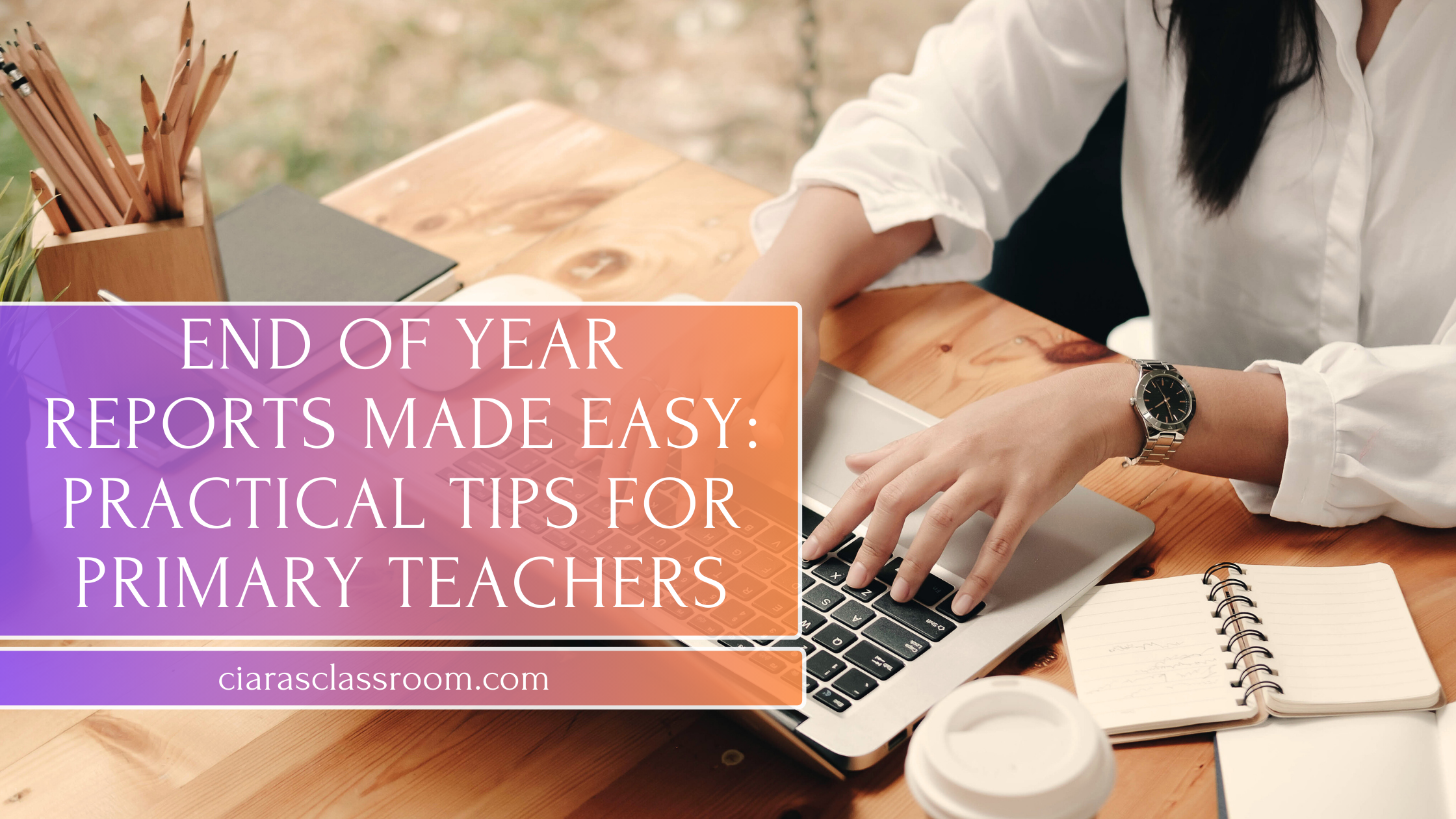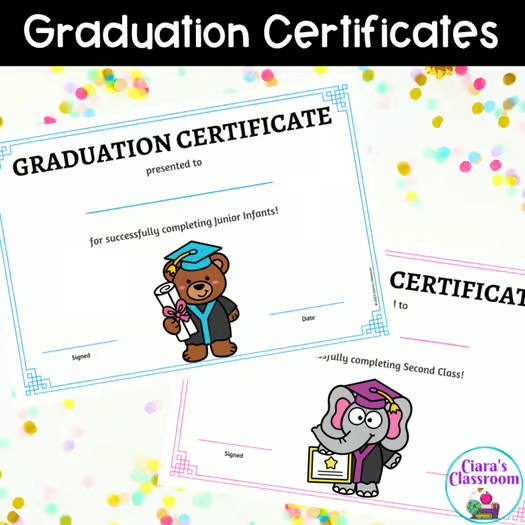End-of-Year Reports Made Easy: Practical Tips for Irish Primary Teachers
- 30 Apr, 2025

Writing end-of-year reports can feel like a huge task—especially if it’s your first or second time doing it. Whether you’re working off Aladdin or using NCCA templates, there’s a way to make the process manageable (and even a little enjoyable!). In this post, I’m sharing a few practical tips that will help you write honest, professional reports that celebrate your pupils while saving you time and stress.
1. Start with a Plan
Don’t try to write 30+ reports in one sitting—it’s a recipe for burnout. Instead, aim for a manageable number per day and spread them out over a week or two. Starting with the students who are easiest to write about can help build momentum. I usually aim to complete 3 - 6 reports a day. Personally, I like to focus on filling in all of the reports first and then have an afternoon at the end to read back over all the reports (proofreading for any spelling/grammar issues and make sure they are all balanced, honest and accurate) before hitting ‘Complete’ on all of them. Some of my colleagues prefer to proofread after each report and mark each one ‘Complete’ as they go, so it’s all down to personal preference.
2. Keep It Positive and Honest
It’s important to be both encouraging and truthful. Reports are not just keepsakes—they’re also valuable tools for parents and future teachers. Frame feedback constructively. For example:
- “With continued support, Jack will grow in confidence when tackling unfamiliar maths problems.”
- “Aoife has made steady progress with her reading fluency and benefits from opportunities to discuss what she has read.”\
This approach helps you stay professional, while gently flagging areas that may need attention. Being honest now also helps to support next year’s teacher. If you write that a child is “doing well with reading” when, in truth, they’re still struggling with phonics, it can make future conversations with parents more difficult. When concerns are raised later, families may feel blindsided—especially if previous reports painted a different picture. A clear, gentle note now can go a long way in building trust and continuity of support.
For example:
- “Alec has been working very hard on reading and writing this year. He is beginning to recognise common phonics patterns and benefits from regular revision and support.”
- “With continued phonics practice and reading aloud at home, Sara will continue to build confidence and fluency.”
3. Create a Simple Template
Use a structure that works across reports to save time. A typical paragraph might include:
- A strength or two in a core subject
- A growth area with supportive phrasing
- A personal note about their character or contribution to the class
Here’s an example of a general comments section:
Clara is a kind and enthusiastic member of our class who brings a positive attitude to group work and class discussions. She has made strong progress in creative writing and consistently shows thoughtful ideas and vivid imagination in her stories. Clara has become more confident in mental maths but would benefit from continued practice with problem-solving strategies. Her cheerful nature and curiosity make her a pleasure to teach. I wish her the very best of luck as she progresses to Third Class!
4. Use a Personalised Comment Bank
Having a collection of adaptable phrases can speed things up. Here are a few to get you started:
- “X shows a natural curiosity and asks thoughtful questions during lessons.”
- “X has a strong grasp of number concepts and works accurately and efficiently.”
- “X is a fluent reader who engages well with a wide variety of texts.”
- “X enjoys creative tasks and shows particular talent in art and writing.”
- “X is a cheerful, friendly child who contributes positively to our classroom environment.”
- “X approaches learning with enthusiasm and persistence.”
- “X has grown in confidence this year and is developing greater independence in their work.”
- “X demonstrates kindness and respect towards their peers and teachers.”
- ”[Name] is a creative thinker who enjoys hands-on activities and problem-solving.”
- “With encouragement, [Name] is learning to take more pride in the presentation of their work.”
- ”[Name] brings energy and curiosity to class discussions and group work.”
- “It has been lovely to see [Name] develop friendships and grow in confidence this term.”
- “X would benefit from continued support in applying spelling strategies independently.”
- “With gentle reminders, X is learning to stay focused and complete tasks within a set time.”
- “X is encouraged to contribute more during group discussions to build his/her confidence.”
- “X is developing their ability to organise written work clearly and with detail.”
- “X works well with others and is developing strong collaboration skills.”
- “X is learning to manage emotions more effectively and respond calmly to challenges.”
- “X is a considerate classmate who often helps peers without being asked.”
- “X is learning to take turns and listen respectfully during group tasks.”
Over time, you’ll build your own go-to list of comments that sound like you.
5. Remember the Bigger Picture
Reports don’t need to list every single achievement. Focus on what best reflects the child’s learning journey and character this year. Parents appreciate thoughtful, honest reflections far more than a checklist of generic praise.
6. Save Time Where You Can
Use digital tools to help streamline the process—such as voice-to-text features or if you’re part of a school team, see if there’s a shared bank of ideas or examples you can draw from.
Final Thoughts:
You’re not alone in finding reports a challenge. But with a few smart strategies and the right mindset, you’ll get through them with confidence—and maybe even enjoy reflecting on all the progress your class has made. You’ve done an amazing job this year. Well done!
Bonus Tip: End the Year on a High
While reports are serious business, the end of the year is also a time to celebrate your students. If you’re looking for a simple way to do this, my Graduation Certificates for all class levels are a lovely way to mark the occasion. They’re editable, printable, and a great keepsake for students and parents. You can find them here.
